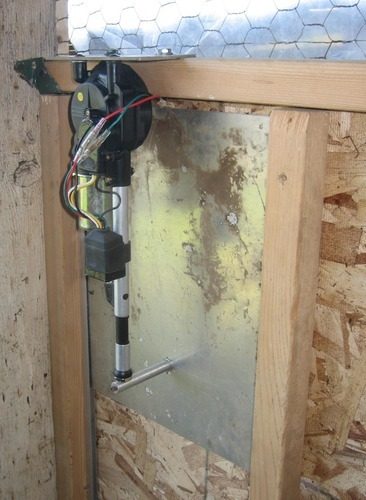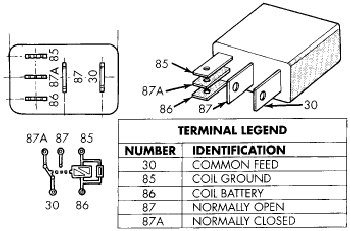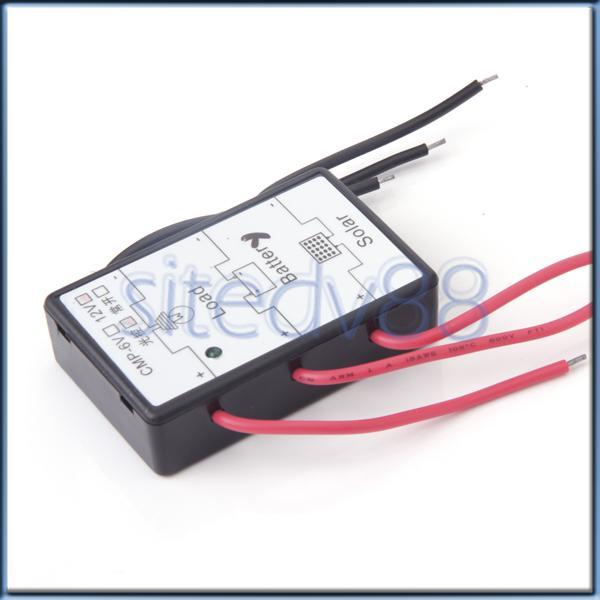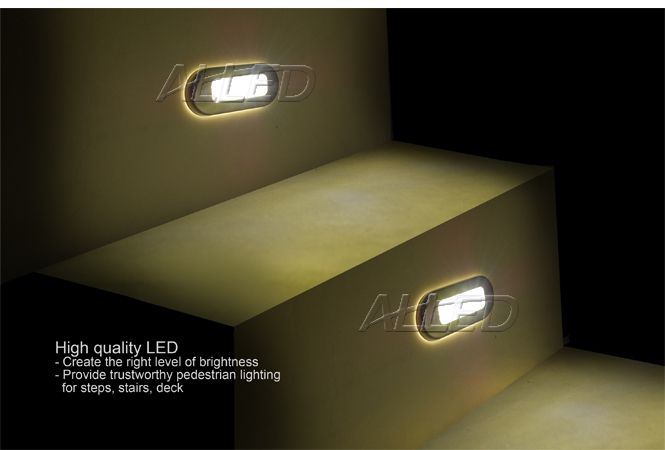- Jul 10, 2012
- 22
- 1
- 24
I am working out in my head a proof of concept and trying to get my hands around a project that others may find interesting.
The concept is to use some high-tech products to make a fully self sustaining solar based system without breaking the bank. I would love to hear other ideas on how to make this better, but it is an idea now.
Fully Automated Solar powered (with battery backup) pop door, and interior LED Coop lighting operating automatically on sunrise/sunset with additional manual operating switch.
I got the idea to use an automotive antenna to control the pop door from another website but wanted to improve on the design and make it MUCH much easier. The idea is great however I have some ideas on how to make it much better


Parts required:
12V car battery
12V auto relay Bosch style something like this $5

Light sensor $7.50

Automatic antenna 3 wire $35

Solar panel regulator $7.00

Solar panel $15

optional
waterproof LED light $12

Delay off Timer $17

The overall concept is quite straight forward with minimal wiring. A relay is used as the light sensor has a negative trigger and the automatic antenna requires a positive trigger. A simple automotive relay can be used to change the polarity.

Basic wiring
Relay
12V battery from solar regulator pin 86
12V battery from solar regulator pin 30
12V ground from sensor red wire pin 85
Remote power on to antenna to pin 87
Light Sensor
Sensor Black wire battery ground 12V ground from solar regulator
Sensor White wire battery power 12V battery from solar regulator
Sensor Red wire to pin 85 on relay
Three wire automatic antenna
Power wire 12V battery from solar regulator
Ground 12V ground from solar regulator
antenna Power on wire to pin 87
manual switch
additional optional switch manual contact closure switch on wire to 87 from battery
Since we have a solar system with battery backup that can function based on outdoor light, why not take advantage of the power? Pin 87a on the relay will have power when it is dark outside. As a result we can simply power an interior 12V LED light using pin 87a on the relay and ground from the solar regulator.
Basically this simple design will give you power on the relay pin 87 in daylight and then switch off at night and alternatively power on relay pin 87a at night and switch off during the day. In order to control how long the power is running during the night you can get a simple delay off time like the one in the photo above and program it to turn off at anytime. the one image above from ebay runs from 15 minutes to 10 hours as desired.
This is how I envision this system.
At daybreak, light sensor comes on activates the pop door by running the automotive antenna. At nightfall, light sensor goes off pop door is closed using the battery backup and interior lights or whatever desired to run on 12V will come on and run as long as programmed.
I know this is a little technical but I am sure many will grasp the concept and help me improve on this before I put something like this together. It is really quite simple, and has lots of functions. Plus not very expensive. Just need to build a water tight box for the battery and the very small electronics such as relay timer if used.
Please tell me your thoughts as I would like to improve on this concept before putting it all together
The concept is to use some high-tech products to make a fully self sustaining solar based system without breaking the bank. I would love to hear other ideas on how to make this better, but it is an idea now.
Fully Automated Solar powered (with battery backup) pop door, and interior LED Coop lighting operating automatically on sunrise/sunset with additional manual operating switch.
I got the idea to use an automotive antenna to control the pop door from another website but wanted to improve on the design and make it MUCH much easier. The idea is great however I have some ideas on how to make it much better


Parts required:
12V car battery
12V auto relay Bosch style something like this $5

Light sensor $7.50

Automatic antenna 3 wire $35

Solar panel regulator $7.00

Solar panel $15

optional
waterproof LED light $12

Delay off Timer $17

The overall concept is quite straight forward with minimal wiring. A relay is used as the light sensor has a negative trigger and the automatic antenna requires a positive trigger. A simple automotive relay can be used to change the polarity.

Basic wiring
Relay
12V battery from solar regulator pin 86
12V battery from solar regulator pin 30
12V ground from sensor red wire pin 85
Remote power on to antenna to pin 87
Light Sensor
Sensor Black wire battery ground 12V ground from solar regulator
Sensor White wire battery power 12V battery from solar regulator
Sensor Red wire to pin 85 on relay
Three wire automatic antenna
Power wire 12V battery from solar regulator
Ground 12V ground from solar regulator
antenna Power on wire to pin 87
manual switch
additional optional switch manual contact closure switch on wire to 87 from battery
Since we have a solar system with battery backup that can function based on outdoor light, why not take advantage of the power? Pin 87a on the relay will have power when it is dark outside. As a result we can simply power an interior 12V LED light using pin 87a on the relay and ground from the solar regulator.
Basically this simple design will give you power on the relay pin 87 in daylight and then switch off at night and alternatively power on relay pin 87a at night and switch off during the day. In order to control how long the power is running during the night you can get a simple delay off time like the one in the photo above and program it to turn off at anytime. the one image above from ebay runs from 15 minutes to 10 hours as desired.
This is how I envision this system.
At daybreak, light sensor comes on activates the pop door by running the automotive antenna. At nightfall, light sensor goes off pop door is closed using the battery backup and interior lights or whatever desired to run on 12V will come on and run as long as programmed.
I know this is a little technical but I am sure many will grasp the concept and help me improve on this before I put something like this together. It is really quite simple, and has lots of functions. Plus not very expensive. Just need to build a water tight box for the battery and the very small electronics such as relay timer if used.
Please tell me your thoughts as I would like to improve on this concept before putting it all together
Last edited:


